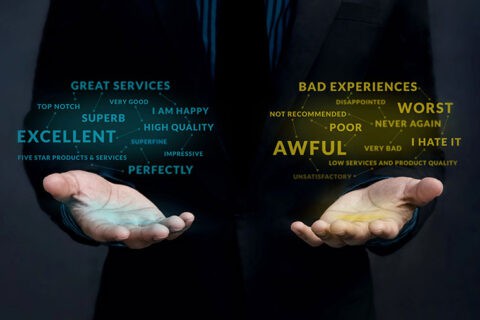Did you know retaining a customer is five times cheaper than acquiring a new one?
For many local businesses, understanding and leveraging Customer Lifetime Value (CLV) can make all the difference in creating sustainable growth and ensuring long-term success. We’ll dive deep into the importance of CLV, how it impacts your business, and practical ways you can incorporate it into your marketing strategy. By the end of this post, you’ll have valuable insights to transform your local business and develop long-term relationships with your customers.
Introduction to Customer Lifetime Value
Customer Lifetime Value is a metric that reflects the total revenue your business can expect from a single customer account throughout the business relationship. It’s crucial for any local business looking to grow and thrive in a competitive market.
But why exactly should local businesses pay close attention to CLV?
- Understanding Your Customers
CLV provides insight into your best customers, allowing you to tailor your marketing strategies to retain them. - Informed Marketing Decisions
By knowing the value of each customer, businesses can optimize their marketing budgets more effectively, focusing investments on the channels that yield the highest returns. - Enhancing Customer Relationships
Understanding the value over time helps businesses develop loyalty programs and other initiatives that foster deeper customer relationships, ultimately enhancing retention.
How to Calculate Customer Lifetime Value
Calculating CLV may sound daunting, but it can be broken down into simple math:
- Average Purchase Value (APV): Calculate by dividing total revenue in a specific time frame by the number of purchases during that period. For example, if you had $100,000 in sales over a year with 2,000 purchases, your APV is: 100,000 / 2,000 = $50.
- Average Purchase Frequency Rate (APFR): This is the number of times a customer makes a purchase within a specific time frame. Calculate it by dividing the total number of purchases by the number of unique customers. If there were 2,000 purchases by 1,000 customers: 2,000 / 1,000 = 2 purchases per year.
- Customer Value (CV): This is the APV multiplied by the APFR. Continuing the example: $50 (APV) x 2 (APFR) = $100 CV.
- Average Customer Lifespan (ACL): This is the average duration a customer continues purchasing from your business. For instance, if a customer typically shops with you for 5 years, that’s your ACL.
- Calculating CLV: Finally, CLV = CV x ACL. In the above example, if each customer spends $100 per year for 5 years, your CLV would be: 100 x 5 = $500.
The Impact of Customer Loyalty Programs
Customer loyalty programs are one practical way local businesses can maximize the value of their customers. Here are a few benefits:
- Increased Retention: By rewarding repeat customers, these programs encourage them to continue with your brand.
- Higher Average Transaction Values: When customers feel rewarded, they are likely to spend more per transaction, thereby increasing overall revenue.
- Valuable Data Collection: Loyalty programs help gather data on customer preferences and spending habits, giving you critical insights into how to serve them better.
Text Message Marketing: A Game Changer for CLV
Text messaging is a powerful tool for engaging your customers directly and personally. It can be used to:
- Promote Special Offers: Send exclusive promotions directly to customers’ phones to drive immediate sales.
- Announce Events: Keep your customers informed about events, ensuring they feel part of the community and your brand.
- Send Birthday Discounts: Personal touches, like a birthday discount, can create loyal customers who feel appreciated.
Building a CLV-Focused Strategy
To cultivate a successful strategy around Customer Lifetime Value, consider these actionable steps:
- Segment Your Customers: Use the insights from CLV calculations to segment your customers and personalize communication accordingly.
- Automate Feedback Loops: Gather customer feedback regularly to adapt your offerings and improve customer experience.
- Monitor Key Metrics: Continuously measure your CLV and identify trends; adapt strategies based on data for maximum effectiveness.
- Educate Your Team: Ensure all team members understand the importance of customer lifetime value and how their roles influence it. Training programs can cultivate a customer-centered culture.
Adapting to Market Changes
Local businesses must remain flexible and adaptive. Consumer behaviors change, and so should your strategies. Stay informed about market trends, and don’t hesitate to pivot your approach based on data-driven insights.
Practical Examples of How to Implement CLV Success
- Local Cafe: Implement a loyalty program that offers a free drink after seven purchases. This feels attainable to the customer and keeps them coming back to get their reward.
- Fitness Studio: Utilize text messages to remind clients of upcoming classes and send weekly motivational texts. This will keep the customer engaged and motivated to continue.
- Restaurants: On a particular day, when sales are usually lower than you’d like, have a text go out to your customers to come in for a free appetizer, or 15% their order. this keeps your tables full and will encourage your hungry customers as well.
Why Ignoring CLV is Risky
Failing to consider Customer Lifetime Value can lead to wasted marketing dollars on customer acquisition and retention strategies that don’t yield long-term benefits. Remember that acquiring new customers is essential, but nurturing and retaining existing ones is equally important.
Ultimately, understanding your customer’s lifetime value isn’t just about numbers; it’s about building meaningful relationships that can withstand the test of time and market fluctuations. It’s time to elevate your business and foster long-lasting customer loyalty.
A Renewed Focus on Customer Engagement
Consider adding a customer loyalty program and engaging your customers through text messaging to maximize their lifetime value. This can include special promotions, personalized announcements, and invitations to events that resonate with them. Your efforts will improve customer retention and enrich their overall experience with your brand.
Connecting with your customers personally fosters trust and loyalty, establishing a strong foundation for your business’s growth. Remember, your customers are your most valuable asset, and by focusing on their lifetime value, you invest in the future of your business.
Always strive to create genuine connections with your customers, and let their lifetime value guide your marketing strategies.




